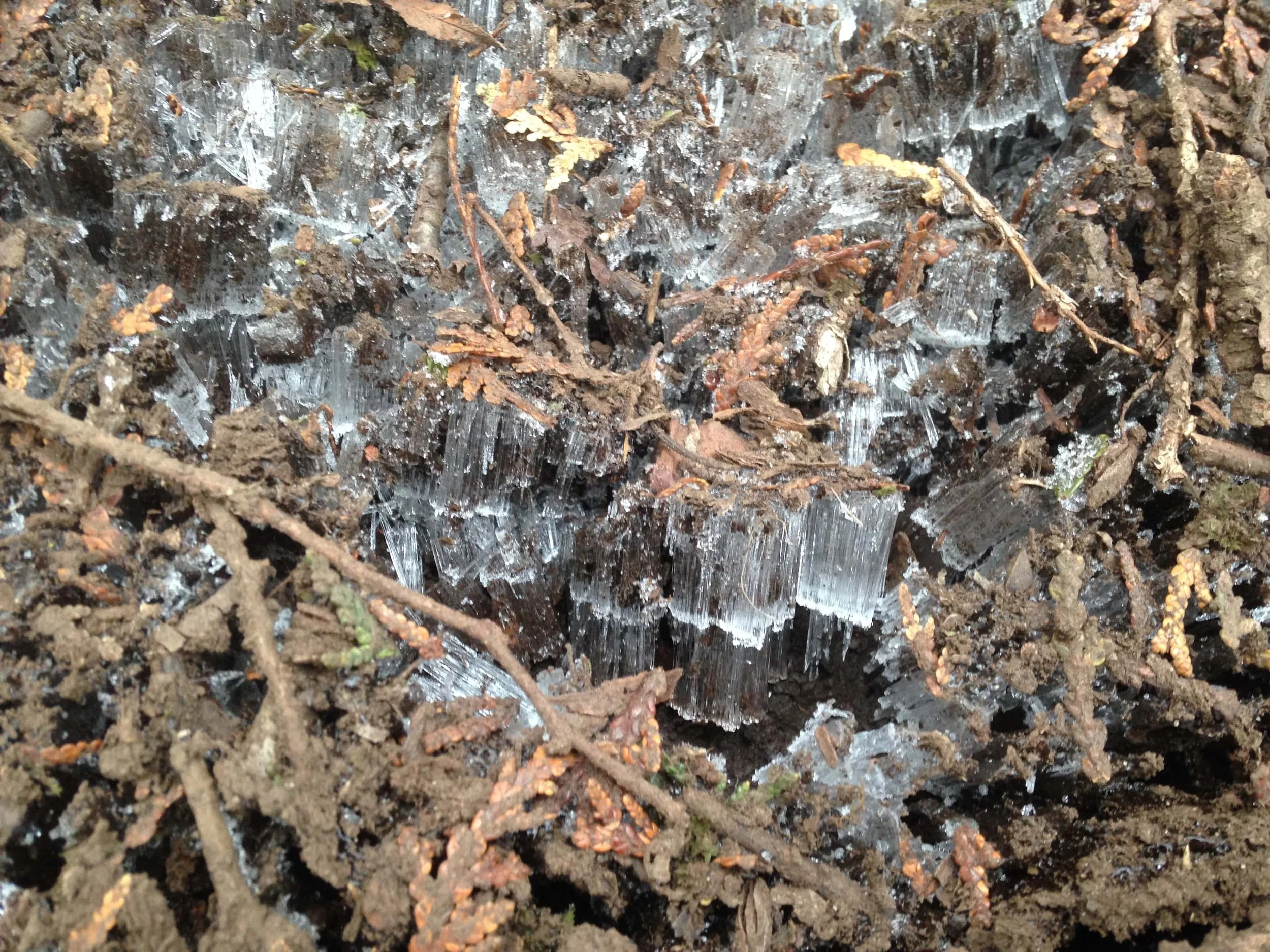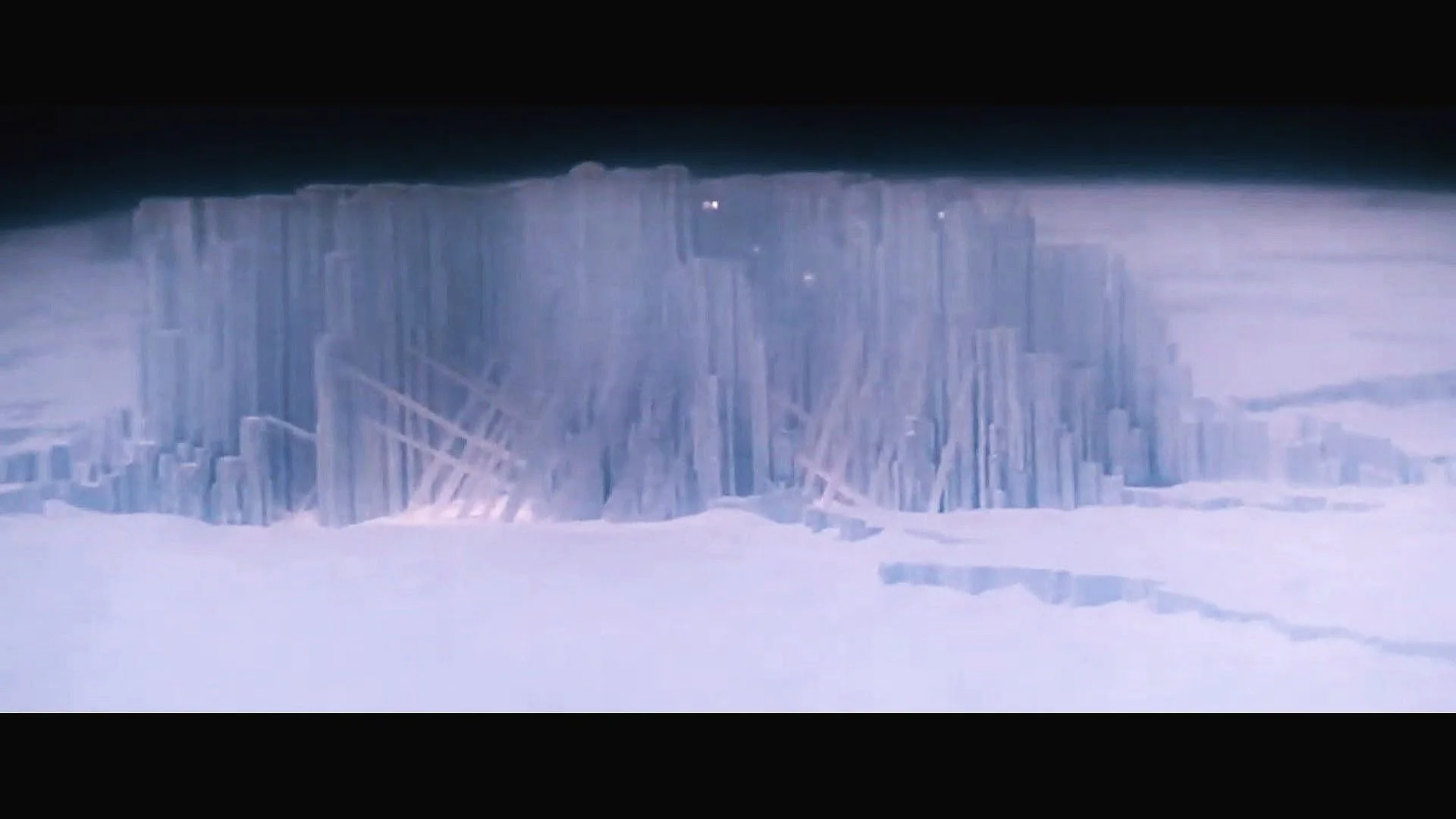What’s Up With The Ice Crystals On The Path?
It happens every year in the forest where I work. The Eastern White Cedar (Thuja occidentalis) leaves which litter the ground are lifted away from the trail by strange columnar ice formations. What is going on?
I came home and quickly researched it and it seems to be a very common thing. The ice crystals, which reminded me of Superman’s “Fortress of Solitude” were actually signs on the ground that the air temperature the evening before had reached below zero degrees centigrade and also pointed to the fact that the soil had a lot of water held within, likely from the consistent rain the week before.
Fortress of Solitude from the 1978 film “Superman”
Ground water sits in the small empty spaces between granules of soil. The most superficial of this water freezes as it comes into contact with the freezing air above. As ice forms it expands and through capillary action, the frozen water, now expanded ice, is pushed upwards and outwards as more water comes in to fill the space where the frozen water was previously standing. These new water molecules freeze and expand upwards and again. This expansion pushes the ice up and out of the soil where more water flows in the space where the previous water was. Eventually the water crystals grow taller and taller becoming the crunchy ground my students and I walk on when we walk through the less compacted areas of the forest. Folks seem to call it “needle ice”, but I think we need something more creative than that.
The soil must display the perfect amount of compaction. The porous areas need to be tight enough to hold the water, but still loose enough to allow water to flow through.
These rising crystal pillars of ice displace soil, rocks, seeds, moss, and all sorts of other debris within and atop the soil. I imagine this creates looser, less compacted soil which likely allows for more root growth from the surrounding Cedar trees, and allows for seeds to shift and move and hopefully settle in lower once the ice crystals melt. I wonder if this is a natural way for the forest to aerate and loosen potentially compacted soils? Aeration like this can allow nutrients to seep deeper into the soil where the roots of plants and mycorrhiza can access them.
I would like to try experiments someday where we cordon off a large square of forest floor and divide it into quarters. From there we get the kids to walk, dance, play within two opposite quarters, leaving the other two quarters alone, free of kid compaction. It would be fun to examine yearly how the compaction vs non compacted soils react in light of the icy crystal columns.
Tomorrow I’ll investigate the presence of “needle ice” along the trails we take through the forest and compare that to the areas adjacent to the trails to see if an area demonstrates more formations of “needle ice” than another.




